
A dam destroyed their river. 61 years later, two First Nations fought for justice
A new documentary, Nechako: It Will Be a Big River Again, dives into how two...
B.C.’s chief forester has cut back logging limits on Haida Gwaii, protecting goshawk nesting habitat and cedar for Indigenous cultural use, but critics are calling for a moratorium on harvesting some of the world’s most carbon-rich forests.
The archipelago of more than 150 islands off B.C.’s northwest coast is home to ancient cedar, spruce and hemlock forests and many plants and animals not found anywhere else. Its incredible biodiversity has earned it the moniker “the Galapagos of the North.”
Decades of intensive logging on the archipelago decimated those forests and led to conflicts that ultimately resulted in the 1988 establishment of Gwaii Haanas National Park Reserve and Haida Heritage Site, a protected area of nearly 1,500 square kilometres. But beyond the boundaries of the conservation area and other protected areas on the islands, clearcut logging continues.
Read more: The battle for Haida Gwaii’s cedars
Lisa White-Kuuyang, a Haida weaver from Old Masset and long-time advocate for protecting old-growth forests on the islands, said continuing to clear cut Haida Gwaii forests threatens Haida culture and the sustainability of the archipelago’s unique ecosystem.
“The disrespectful devastation to the land is not acceptable,” she told The Narwhal.
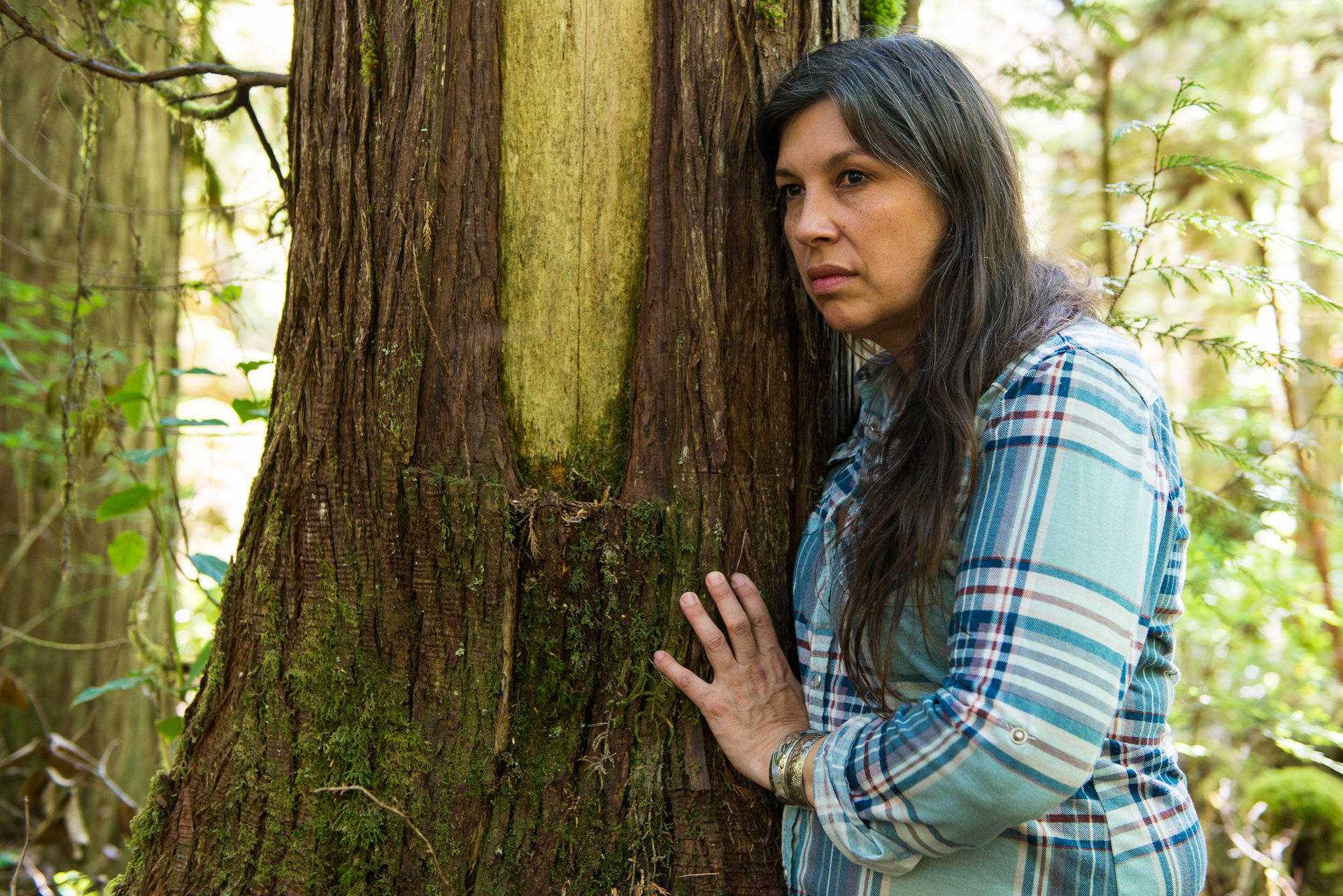
Lisa White-
Kuuyang stands beside a culturally modified cedar in a forest south of Old Massett, Haida Gwaii. Photo: Garth Lenz
Suzanne Simard, a forest ecologist and professor at the University of British Columbia, agreed.
“These super-rich carbon areas from Northern California to Alaska should be just de facto preserved if we have any hope at all of trying to meet our global carbon targets,” she said. “As soon as we start cutting these forests, it’s like we’re just blowing a big hole into our ability to meet any of that.”
Last month’s decision by B.C.’s chief forester set the total annual allowable cut for the three main commercial logging areas on Haida Gwaii at 776,000 cubic metres, enough to fill 20,000 logging trucks. Those trees will come from 15 per cent of the archipelago and most of them will come from old-growth forests. The majority of the trees cut on Haida Gwaii are shipped by barge to mills on the Lower Mainland or directly overseas.
At least every 10 years, the chief forester must determine the annual allowable cut in all of the province’s timber supply areas and tree farm licences. The new limit on Haida Gwaii is 16 per cent less than what it was in 2012, the last time a limit was set for the region, and 56 per cent less than what it was a decade ago.
No one from the Haida Gwaii Management Council was able to speak with The Narwhal about the decision prior to publication. The Ministry of Forests said it can’t provide comment until the final results of the election are determined.
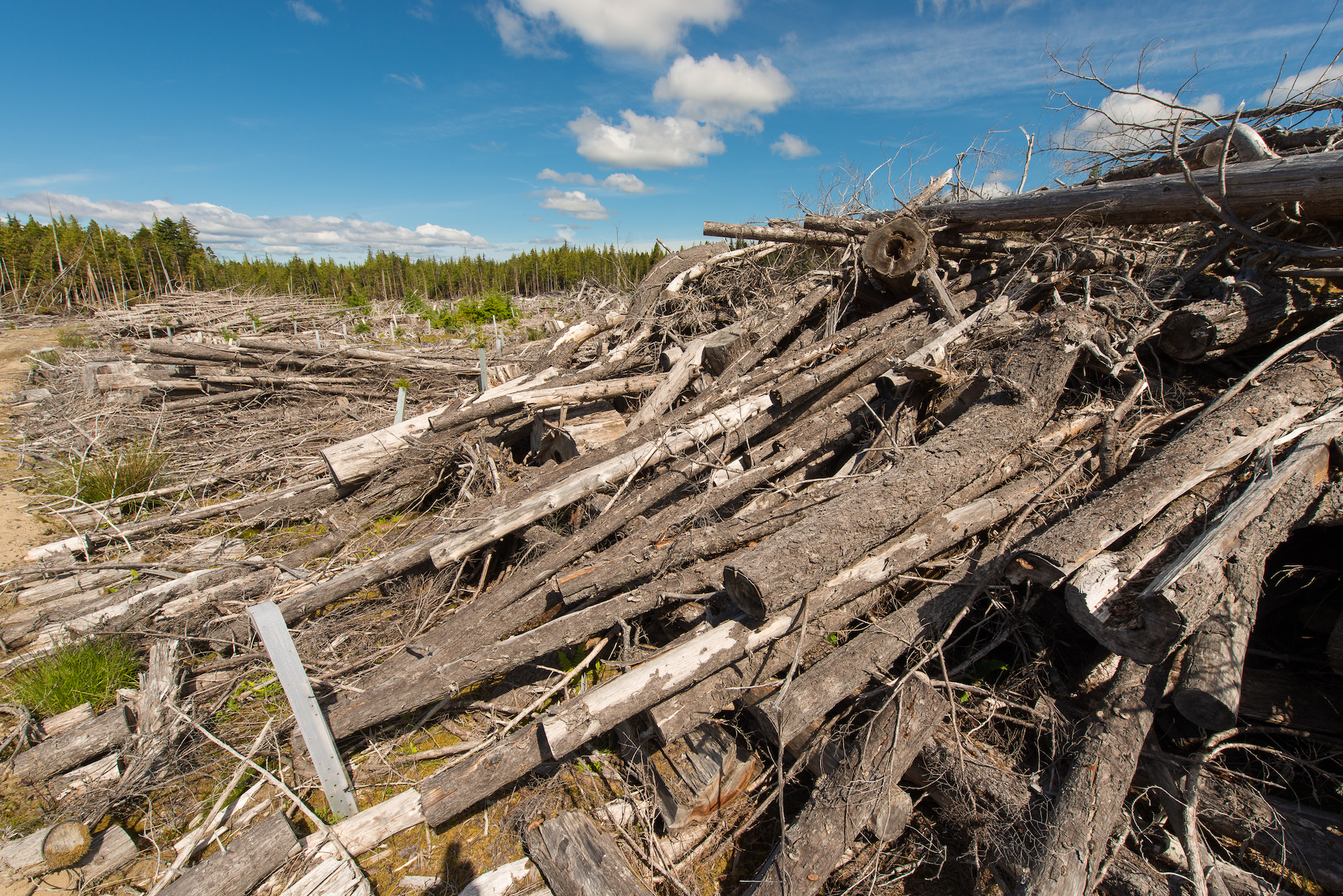
Clearcut logging continues on Haida Gwaii outside the boundaries of protected areas. Photo: Garth Lenz / The Narwhal
The decision to reduce the amount of logging that can take place is based on the recommendations of the Haida Gwaii Management Council, which is made up of two Haida members appointed by the Council of the Haida Nation, two representatives of the B.C. government and a chairperson chosen by the Haida and the province.
Before the Haida Gwaii Management Council made its recommendations to the chief forester, it conducted a five-year timber supply review and socioeconomic analysis. That work involved examining how much forest is available for harvesting in the three main commercial logging areas, projecting the environmental impacts of logging and assessing the contribution of the logging industry to the local economy.
The council ultimately determined that an annual allowable cut of just over 800,000 cubic metres would be sustainable for the next decade. It also recommended that the annual limit for cedar be set at 183,000 cubic metres.
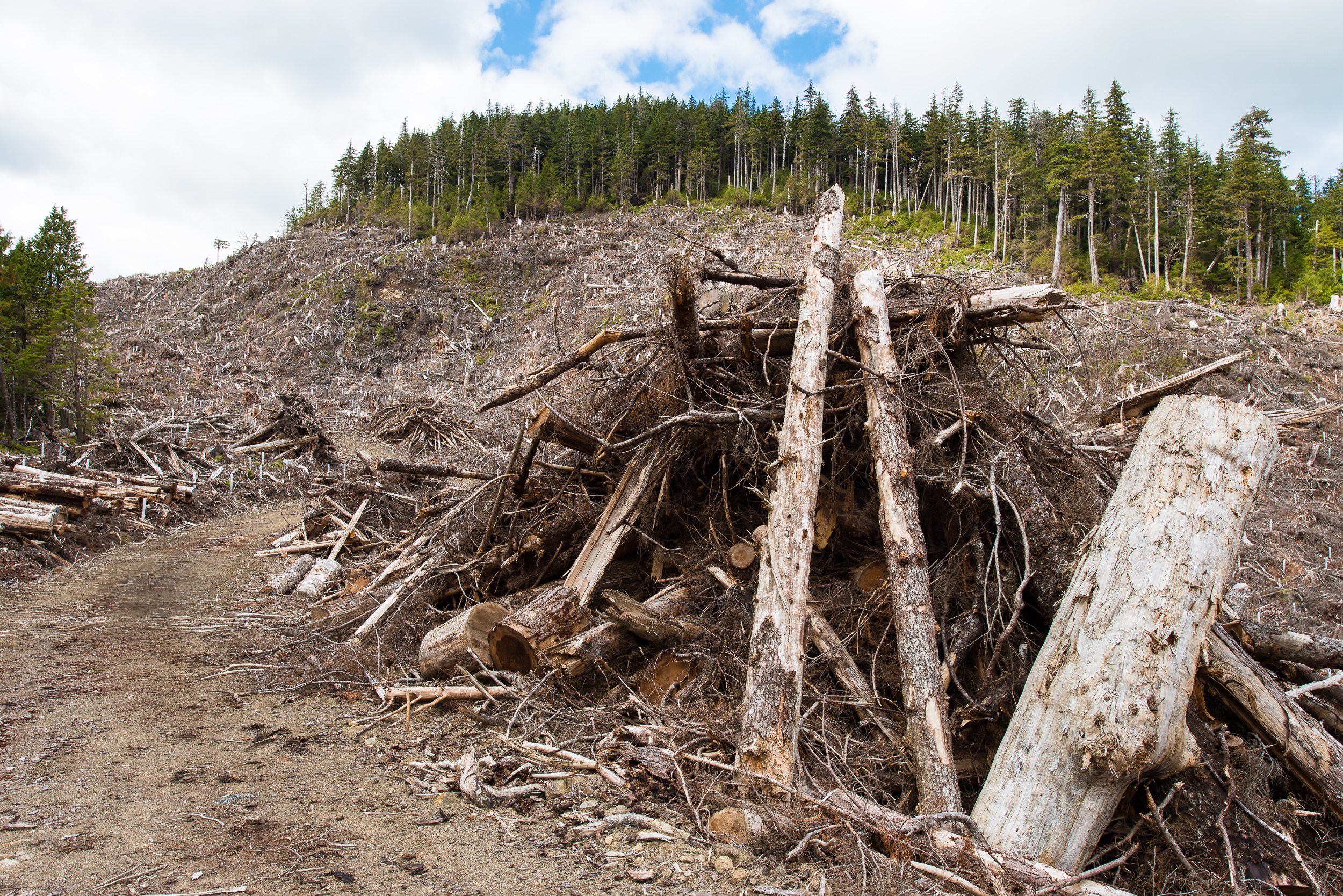
B.C. has committed to reducing carbon emissions to 40 per cent below 2007 levels by 2030, but logging isn’t being counted in the official tally. Photo: Garth Lenz / The Narwhal
Cedar is the economic driver of the forestry industry on Haida Gwaii, but it also has many cultural uses. For instance, it is used to make totem poles, longhouses and dugout canoes. The council acknowledged the need for more data about “monumental” cedars, the large, old trees suitable for these cultural uses.
The council said the annual allowable cut of all tree species needed to be reduced to protect traditional Haida heritage features, like culturally modified trees and traditional trails, and to account for a projected increase in goshawk nesting sites.
In May, the Haida Gwaii Management Council submitted its data and recommendations, including a 70-page rationale document, to the province.
The chief forester agreed with the council on most of its recommendations and noted that more information is needed about how many monumental cedars are in the harvestable area.
Weighing the council’s recommendations against the economic implications of limiting cedar harvest, the province set a maximum allowable harvest amount of 250,000 cubic metres of the tree per year. That’s over 6,000 loaded logging trucks.
Sm’hayetsk Teresa Ryan, a Tsimshian researcher and lecturer at the University of British Columbia, said the allocation is based on short-term economics and ignores the long-term environmental and socioeconomic impact.
“There’s always a demand for the wood, but it’s up to us to put the brakes on to be more responsible for the land,” she said.
Simard said one of the underlying problems with the timber supply review — and forestry in general — is it assumes logging is economically and environmentally sustainable because replanted stands grow big enough to replace old-growth within 80 years.
But Simard said it can take centuries to replace old-growth on Haida Gwaii, which is home to a perfect combination of muskeg and old-growth forests that stores more carbon than most forest ecosystems. “Haida Gwaii has some of the richest carbon stores in the world.”
Simard explained that young cedars rely on mature trees because they need shade to grow, so planting them in open cutblocks doesn’t allow them to meet their ecological needs. “They’re pretty much doomed for failure,” she said.
“Thinking that you can just mow down a forest and then just put in a bunch of nursery-grown seedlings to replace it is offensive,” Ryan added. “It’s like going into a grocery store and buying all the groceries without another delivery on the way.”
Ryan and Simard also said the review made assumptions about future forest growth that are inconsistent with climate change projections. “With climate change, the second-growth forests will likely severely underperform relative to primary forests,” they wrote in a letter to the council submitted during a public consultation period, explaining that replanted coastal stands are already suffering from the effects of climate change.
And as the forest is clear cut, the wildlife that relies on the ecosystem is increasingly threatened.
“I have great concerns over what [logging] is doing cumulatively to the biodiversity and species that live here,” White-Kuuyang said. “We have unique bears here, goshawks, ermine, owls and salmon. Salmon are a huge, huge concern culturally and even economically, providing food for our people.”
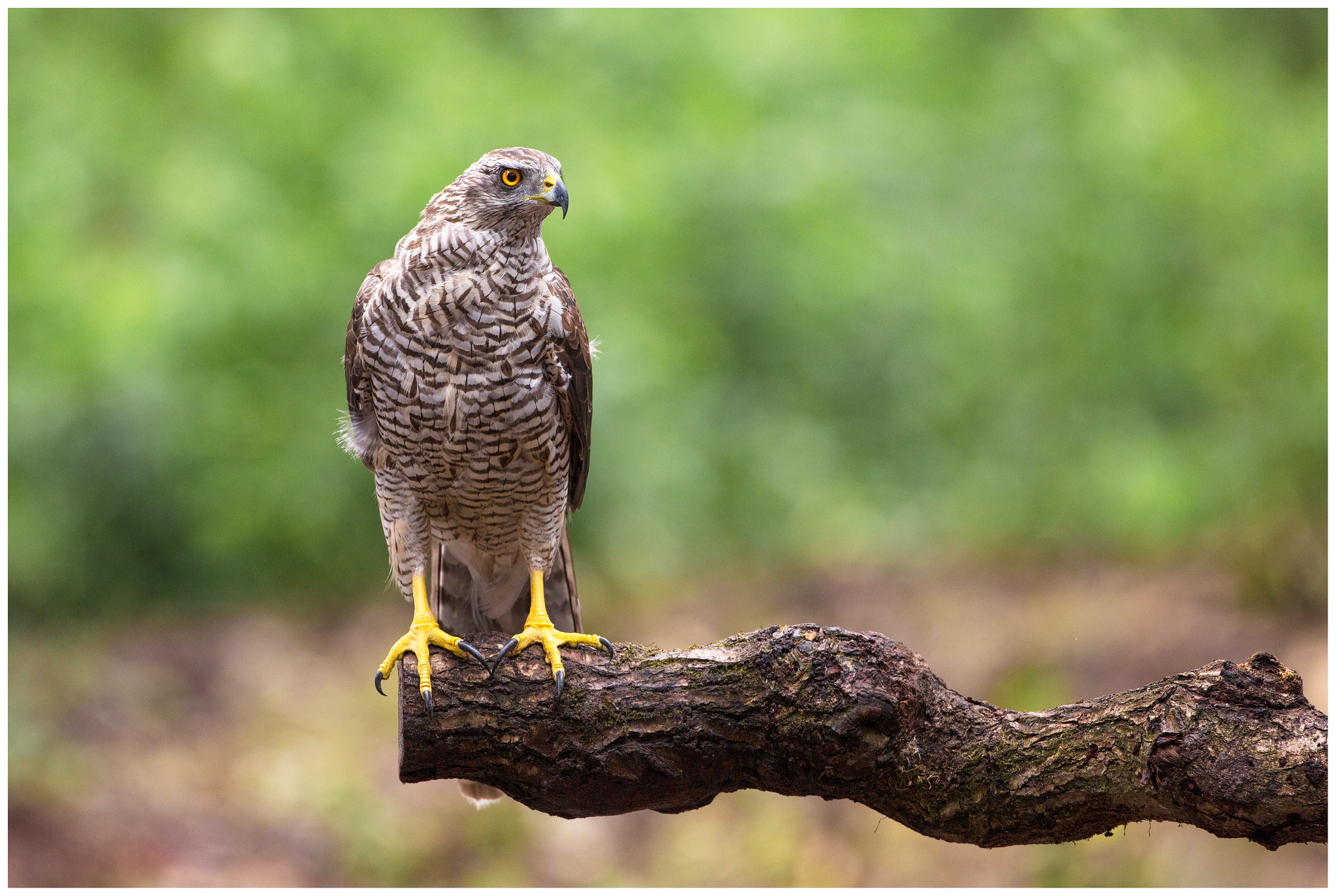
The goshawk, stads k’un, is the national bird of Haida Gwaii. Photo: Martha de Jong-Lantink / Flickr
Ryan said the situation is already dire. “You can’t have salmon without a forest and you can’t have a forest without salmon. There’s an interdependent relationship between these species in this ecosystem — and it’s been severed.”
The management council discussed the loss of biodiversity in its rationale document, but said it could not recommend reducing the allowable cut to protect habitat for species that don’t have management strategies in place.
Ryan and Simard urged the council to put a moratorium on clearcutting to allow time to fully study the long-term environmental and socioeconomic implications of continuing to log on Haida Gwaii and recommended that the archipelago be proposed as a UNESCO biosphere reserve.
For White-Kuuyang, the value of cedar is not monetary. “That tree is called our Elder sister,” she said. “That’s the respect that’s given for providing us with clothing, basketry and different things that helped enable our ancestors to survive here.”
She said the connection to cedar and the forest is inextricably intertwined with Haida culture. “If any kind of harvesting is done, it should be done respectfully, like our ancestors did it. They used wood for everything — for their homes, totem poles, clothing, heating, storage — but yet the land was in perfect shape because they selected single trees and let the rest of the forest grow.”
She said Haida Gwaii still has a chance to stop before all the forest is gone, and she and other concerned citizens have been researching solutions like creating a UNESCO biosphere in which sustainable logging could still play a role, or setting up the islands as an Indigenous Protected Conservation Area.
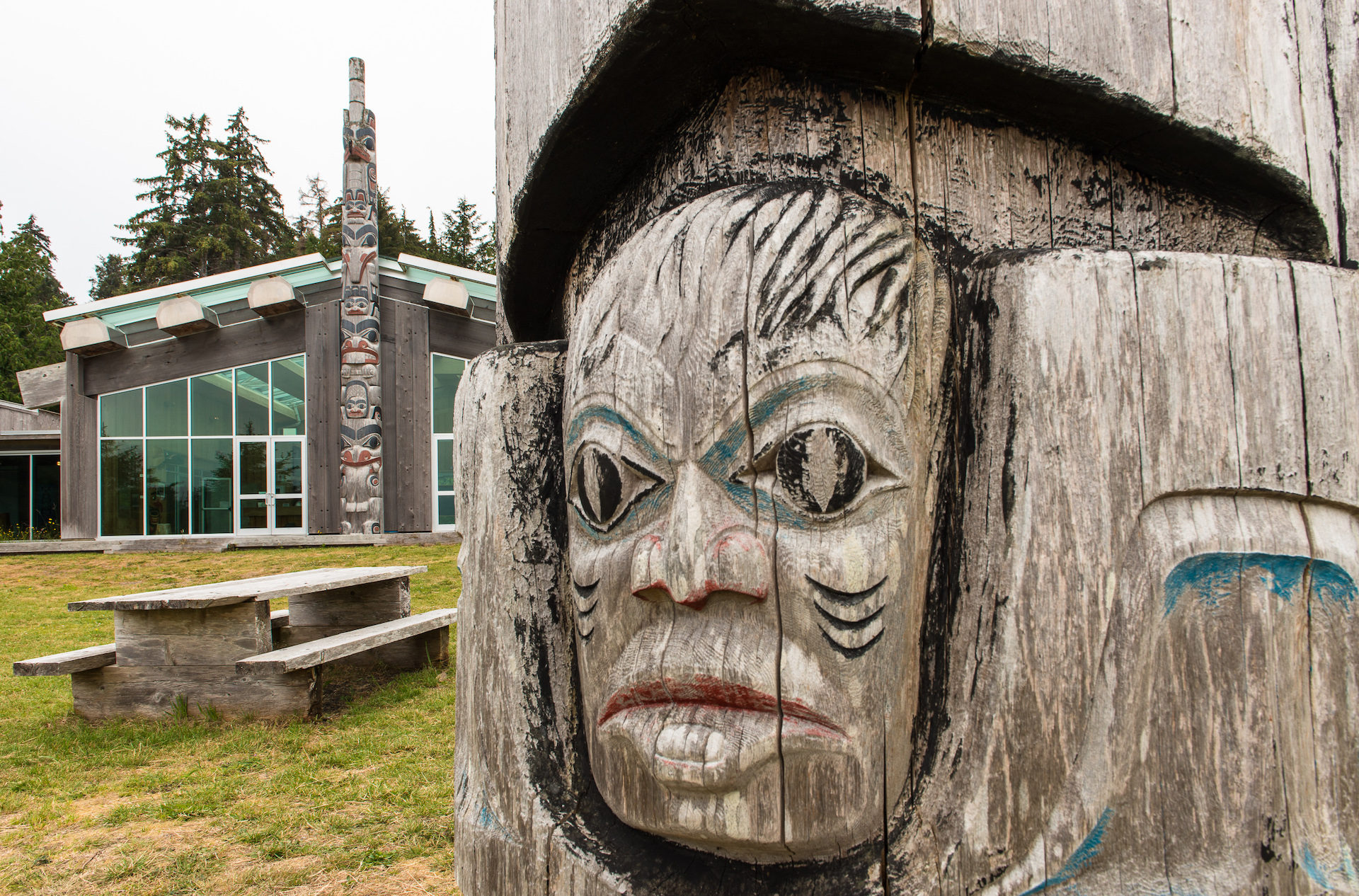
Cedar is used for many cultural purposes on Haida Gwaii, including making totem poles. Photo: Grath Lenz
“That could really, truly be something that would give our people some hope and some employment through guardianship, through stewardship, through restoration, through science. And that would provide healing, not only for the land, but for the people.”
In 2014, the federal government committed to protecting 17 per cent of land and inland water and a further 10 per cent of marine ecosystems. Ryan and Simard said protecting Haida Gwaii could help the government meet those targets.
“The forests of the Pacific Maritime region, including Haida Gwaii, stand out as among the most productive, carbon rich and biodiverse of the world, and there is a global expectation that Canada is committed to protecting these ecosystems to mitigate global change now and for the future,” they wrote in their letter.
The first step, White-Kuuyang said, is simple.
“In order to restore and heal, first of all, they have to stop the damage.”
Get the inside scoop on The Narwhal’s environment and climate reporting by signing up for our free newsletter. Angello Johnson’s shoulders burn, and his arms...
Continue reading
A new documentary, Nechako: It Will Be a Big River Again, dives into how two...

Bracken was recognized for intimate portraits of residents of Fort Chipewyan, Alta., who told her...

A guide to the BC Energy Regulator: what it is, what it does and why...
